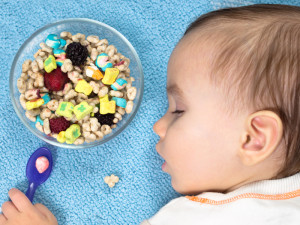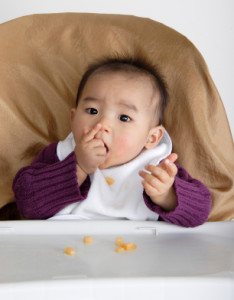Why Not Both Purees and Baby Led Weaning (BLW)?
/{Guest post at Love Child Organics} I receive questions from many parents asking me whether they should use purees or finger foods (a method called Baby Led Weaning or BLW) as they start to introduce their babies to solid foods. I believe that there isn’t only one right way to start babies on solid foods. Why not use both purees and finger foods?
When introducing solid foods you’re achieving several goals:
- Meeting your baby’s nutrition needs.
- Providing the opportunity to learn eating skills.
- Minimizing the risk of choking.
All three of these can be achieved through offering your baby purees, finger foods, or a combination of both.
Further, I’ve been practicing long enough to have met babies with all different temperaments (personalities). Some are little independent souls who never accept being fed by a parent. Parents of these little ones need to have a ton of patience as their child learns how to pick up food and actually get it in her mouth. On the other hand there are babies whom I call “happy little outsourcers”. They figure out that their parents are much more efficient at getting food in their mouths and so they’re happy to sit back and let you spoon every bite into them. Most babies fall somewhere in between these two extremes.
I’ve also seen that babies catch onto the skills of eating finger foods at a variety of ages – typically somewhere between 6 and 10 months. This isn’t surprising since there’s always a range of ages when babies reach any developmental milestone. Some babies roll over before others, some crawl before others, and some pick up finger foods before others.
In my opinion, what’s most important is to:
- Provide a wide variety of healthy foods,
- Include iron-rich foods (twice a day is a good frequency),
- Follow your baby’s lead,
- Match your technique to your baby,
- Provide your baby with the opportunity to learn eating skills, and
- Use techniques that you’re comfortable with.
The result: you’re teaching your baby to have a positive experience with food.
Click here to get more tips on nutrition for babies.



 {
{ {Guest post I contributed to the
{Guest post I contributed to the  {Guest Post at
{Guest Post at 



